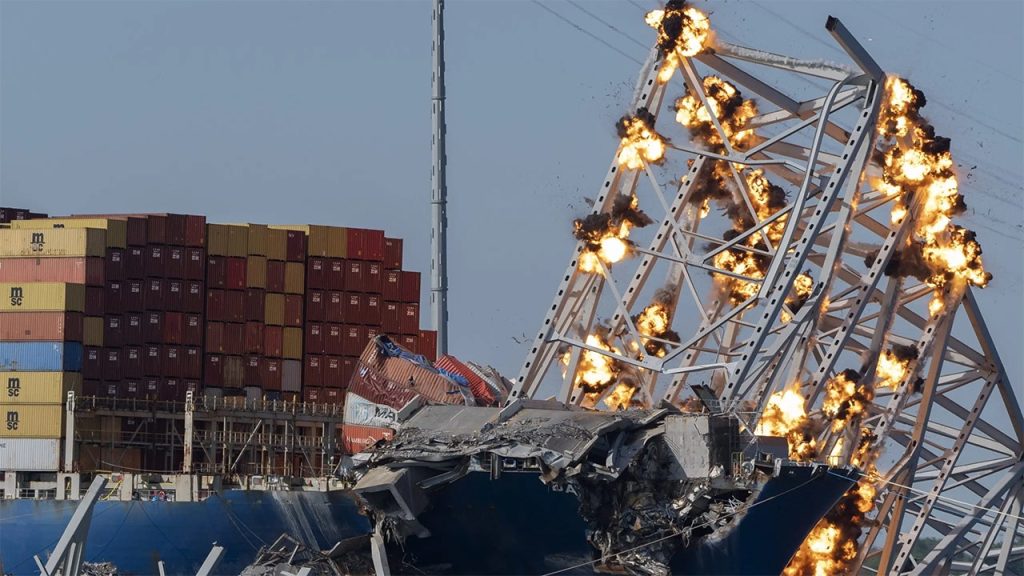The preliminary report from the National Transportation Safety Board revealed that a crewmember’s mistake caused the Singapore-flagged cargo ship, the Dali, to blackout a day before it crashed into the Francis Scott Key Bridge in late March, resulting in its collapse. The crewmember had accidentally disabled the vessel’s equipment during in-port maintenance in Baltimore. Additional blackouts were experienced due to insufficient fuel pressure for the online generator. It is still unclear how these technical malfunctions may have contributed to the vessel losing power before hitting the bridge.
When the Dali was less than half a mile from the bridge in the early hours of March 26, a primary electrical breaker tripped, causing the ship to lose electrical power and experience another blackout. The main propulsion diesel engine shutdown after the pumps lost electrical power. The crew managed to restore power, called for tug boat assistance, and dropped the ship’s anchor. However, a second blackout occurred, leading to the ship striking a main support pier on the bridge, resulting in its collapse. The ship was headed from Baltimore to Sri Lanka and issued a mayday alert just in time for police to stop traffic but not enough time to save bridge workers who fell to their deaths.
Following the collapse, the National Transportation Safety Board launched an investigation immediately. Investigators boarded the ship to collect evidence, including the vessel’s data recorder and information from its engine room. They also interviewed the captain and crew members. The FBI has initiated a criminal investigation into the circumstances leading up to the collapse. The investigation will review policies, training practices, and other relevant factors, as well as the design, engineering, and condition of the bridge. Crews conducted a controlled demolition to break down the largest remaining span of the collapsed bridge, aiding in freeing the grounded Dali container ship.
The full investigation by the NTSB could take a year or more, as the preliminary report likely includes only a portion of the findings that will be presented in the final report. The report also mentions plans to review the ship’s technical malfunctions that occurred before the collision and investigate any potential negligence in maintenance procedures. The investigation will also focus on the actions taken by the crew after the blackouts, including the decision to drop anchor and call for tug boat assistance. The impact of the collapse on the surrounding area and potential lessons learned to prevent similar incidents in the future will also be examined.
The collapse of the Francis Scott Key Bridge resulted in 52 confirmed deaths and 20 individuals still missing. The tragic incident also caused significant damage to the bridge and surrounding areas, leading to a heightened sense of urgency in the investigation. The NTSB is committed to a thorough and comprehensive review to determine the root causes of the collapse and ensure accountability for any errors or negligence that contributed to the disaster. The final report will likely provide valuable insights into the sequence of events leading up to the collapse and recommend measures to prevent similar accidents in the future.
The bridge collapse not only resulted in loss of life but also raised questions about the safety and maintenance of infrastructure in the United States. The incident underscores the importance of proper maintenance, training, and adherence to safety protocols in the maritime industry. The NTSB’s investigation will provide valuable data and recommendations to improve safety standards and prevent similar tragedies in the future. The collaboration between federal agencies and law enforcement in conducting a comprehensive investigation demonstrates a commitment to uncovering the truth behind the collapse and holding accountable those responsible for the disaster.


